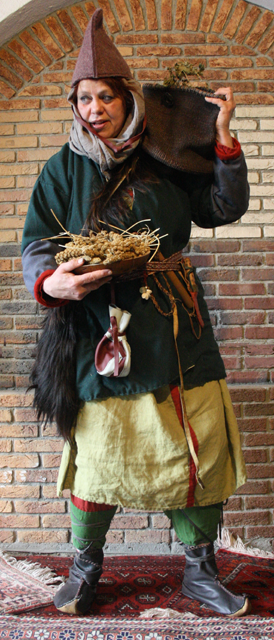Trader from the Silk-Road
About the Scythian population which inhabited the present day Xinjiang in the Iron Age, little is known. You can not yet unequivocally assign an ethnicity or group. But we know that the areas on the western border of the Chinese empire, which was the starting point of the Silk Road, early was a cultural melting pot.
Since the Bronze Age and up today, the area in and around the Taklamakan Desert in Xinjiang was the home of various ethnic groups and served as a hub of trade in all directions.
So, in the local tombs not only goods of different origin, which are evidence of the extensive trade, but also a mixture of populations of Caucasian and Mongoloid phenotype was found. Regardless of ethnicity and appearance these people who lived in the fertile oases of the Taklamakan desert, presumably were semi-nomadic. Culturally and on the trade route they were in close contact with the nomads of the Eurasian steppe belt.
The local tribes benefited from extensive trade, which led through this area (for example, the Silk Road), as it is proofed grave finds. The particularly dry and hot climate of Xinjiang conserved organic materials such as clothing or food, so we have a relatively good imagination of the population at that time today. Almost all garments shown correspond with finds from Sampula and Loulan in the Taklamakan Desert and are manufactured in original dimensions. The latter shows that the people of the time must have been tall, because the clothes fit a person with more than 1.80 meters. As undergarment suits a long dress made of green fabric with dark red trim pieces, which reaches to the calves. Above that it could have been worn a woolen kaftan closed by a belt. The characteristic feltcap is evidenced by several findings. The trousers of the region were often put together with strips of fabric composed of several different colors.
Click here for the equipments of the trader.

